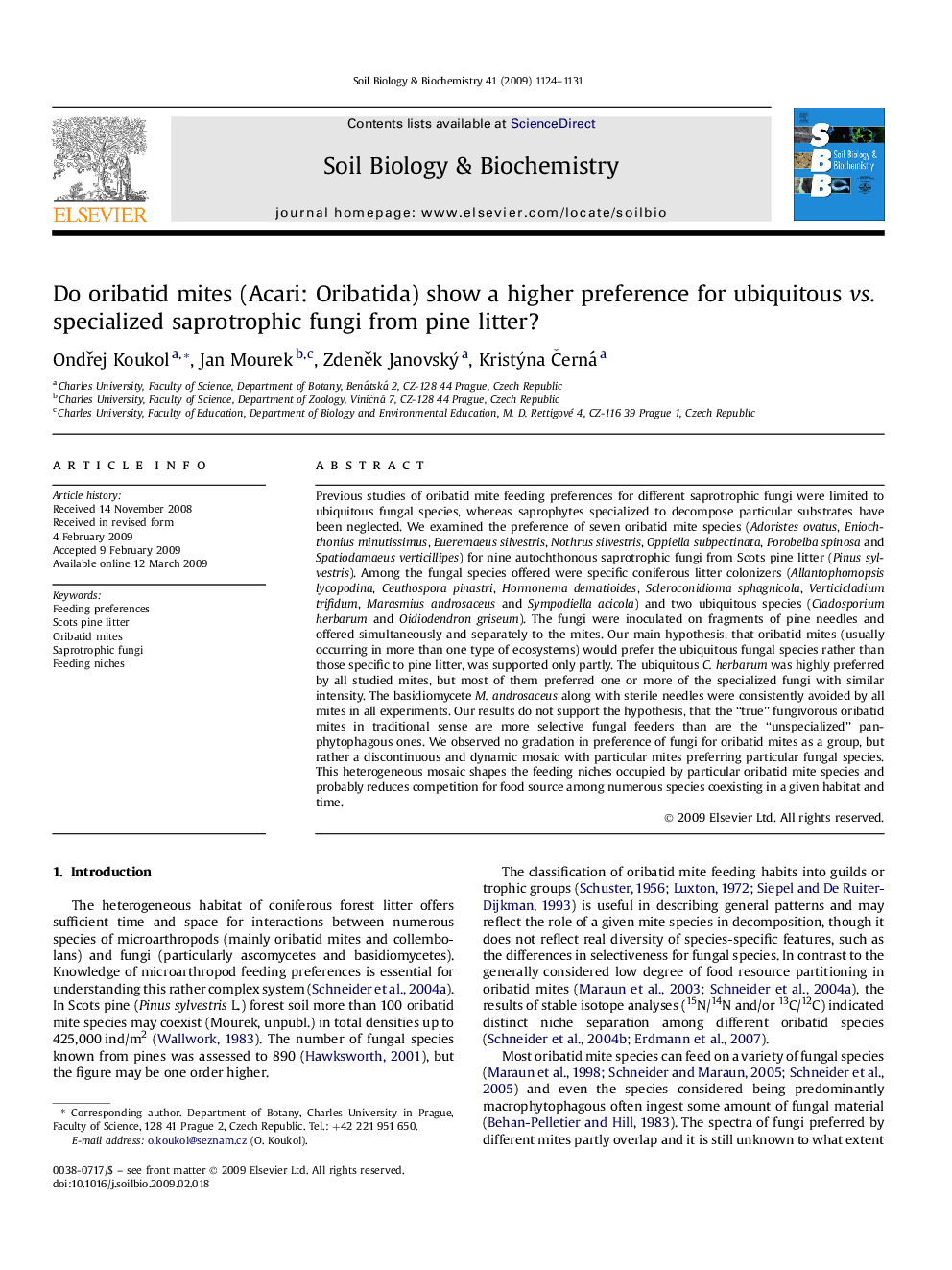| کد مقاله | کد نشریه | سال انتشار | مقاله انگلیسی | نسخه تمام متن |
|---|---|---|---|---|
| 2025612 | 1070004 | 2009 | 8 صفحه PDF | دانلود رایگان |

Previous studies of oribatid mite feeding preferences for different saprotrophic fungi were limited to ubiquitous fungal species, whereas saprophytes specialized to decompose particular substrates have been neglected. We examined the preference of seven oribatid mite species (Adoristes ovatus, Eniochthonius minutissimus, Eueremaeus silvestris, Nothrus silvestris, Oppiella subpectinata, Porobelba spinosa and Spatiodamaeus verticillipes) for nine autochthonous saprotrophic fungi from Scots pine litter (Pinus sylvestris). Among the fungal species offered were specific coniferous litter colonizers (Allantophomopsis lycopodina, Ceuthospora pinastri, Hormonema dematioides, Scleroconidioma sphagnicola, Verticicladium trifidum, Marasmius androsaceus and Sympodiella acicola) and two ubiquitous species (Cladosporium herbarum and Oidiodendron griseum). The fungi were inoculated on fragments of pine needles and offered simultaneously and separately to the mites. Our main hypothesis, that oribatid mites (usually occurring in more than one type of ecosystems) would prefer the ubiquitous fungal species rather than those specific to pine litter, was supported only partly. The ubiquitous C. herbarum was highly preferred by all studied mites, but most of them preferred one or more of the specialized fungi with similar intensity. The basidiomycete M. androsaceus along with sterile needles were consistently avoided by all mites in all experiments. Our results do not support the hypothesis, that the “true” fungivorous oribatid mites in traditional sense are more selective fungal feeders than are the “unspecialized” panphytophagous ones. We observed no gradation in preference of fungi for oribatid mites as a group, but rather a discontinuous and dynamic mosaic with particular mites preferring particular fungal species. This heterogeneous mosaic shapes the feeding niches occupied by particular oribatid mite species and probably reduces competition for food source among numerous species coexisting in a given habitat and time.
Journal: Soil Biology and Biochemistry - Volume 41, Issue 6, June 2009, Pages 1124–1131